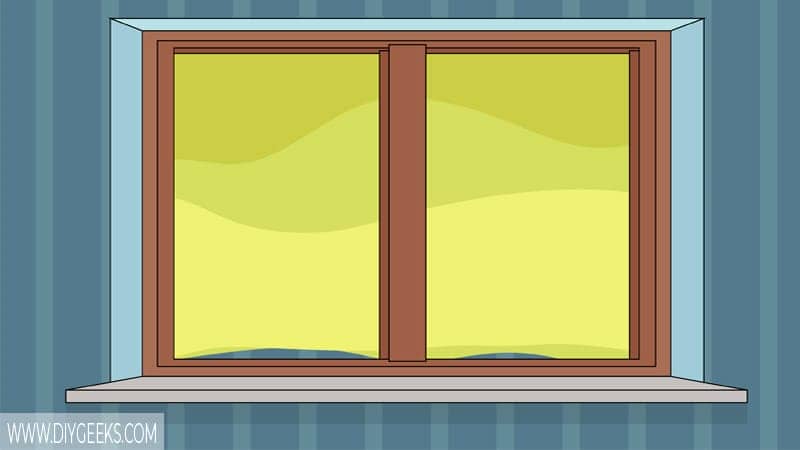To remove paint from a stone window sill, do the following things.
- Wash the Paint off.
- Scrape the Paint off.
- Use a Chemical-Based Paint Remover.
- Use a Heat Gun.
- Use a Sandblaster.
- Use Sandpaper
1. Wash the Paint off
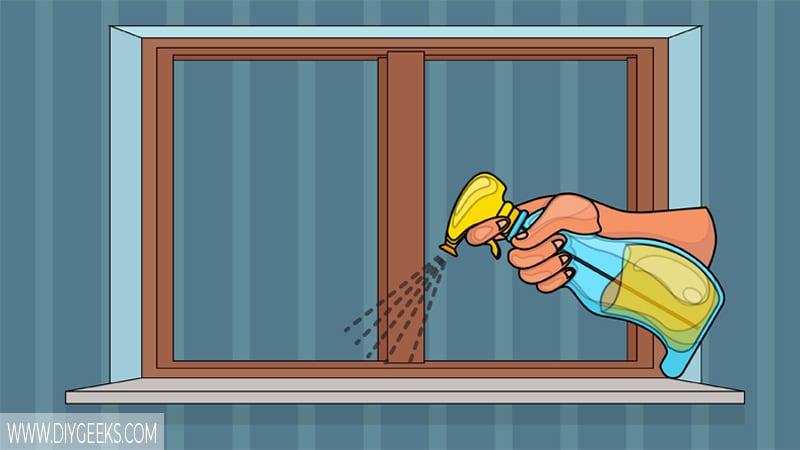
If the stone window sill has latex or acrylic paint, use warm water to remove it. Water-based paints are washable and come off if exposed to water. The warm water and soap will break down the paint particles, making it easier for you to scrape it off.
The tools you need for this project are listed below.
- Dish soap or laundry detergent
- A scrubbing brush
- A bucket of water
- Clean rags
Here’s how to do it:
- Wipe the window sill with a clean rag to remove debris and dust.
- Pour detergent (or dish soap) into a bowl filled with warm water. Mix to create lather.
- Dip a scrubbing brush in the mixture, and scrub the surface. As you scrub, you should see the paint coming off.
- Rinse the affected spot with water and let the surface dry. When the surface is dry, inspect it to see if all the paint is off.
- If there are leftovers on the surface, scrub again.
- Wash the surface.
Tip: If the paint doesn’t come off while scrubbing, this method won’t work.
2. Scrape the Paint Off
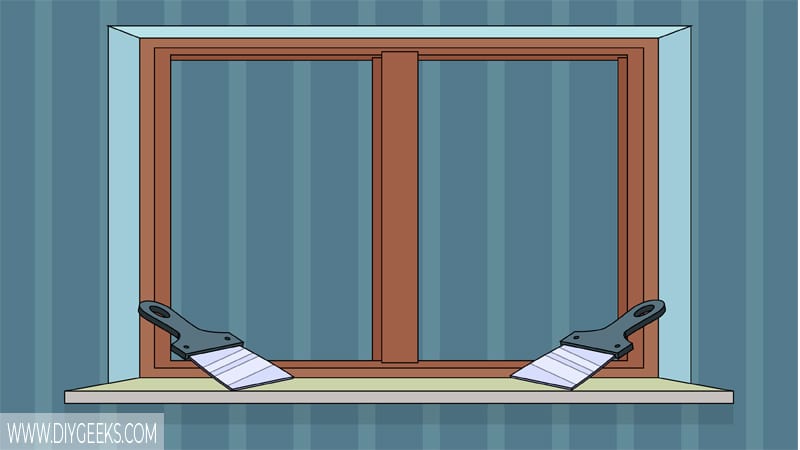
Use a paint scraper to scrape the paint off the window sill. If the paint is too hard (rigid) to scrape use a solvent-based paint remover to soften the paint.
The tools you need for this method are listed below.
- A paint scraper (a trowel or metallic putty knife will work)
- A soft brush.
- A mild solvent (white spirit).
To scrape the paint off, do the following things.
- Put the paint scraper under the paint finish.
- Lift the scraper repeatedly until the paint is removed.
- If the paint is too hard (rigid), apply a solvent-based paint remover.
- Wait 10 minutes.
- Scrape the paint again.
- Wash the window sill with warm soapy water.
Tip: Use a plastic scraper if you don’t want to scratch the surface.
3. Use a Chemical-Based Paint Remover
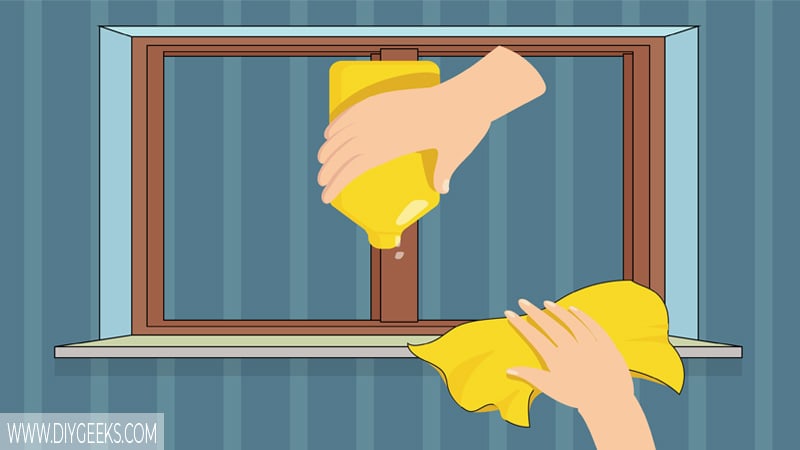
A chemical-based paint remover is a product that contains compounds that break down and soften the paint finish, making it easier to scrape or wash it off. It removes all paint types, including sealers.
Apply the chemical-based paint remover over the paint finish, wait 15 minutes for the paint to soften, then use a paint scraper to scrape it off.
The paint remover penetrates the paint finish and breaks the bond between particles and binders, making the paint coating lose its bond to the surface and soften. Once the paint softens, you can remove it more easily.
The tools you need for this project are listed below.
- A chemical-based paint remover.
- A paintbrush (optional).
- Safety Gears.
Here is how to use this method:
- Clean the window stone hill to remove dust or dirt that can prevent the chemical-based paint remover from penetrating the paint finish.
- Apply the chemical-based paint remover based on the manufacturer’s instructions.
- Wait around 15 minutes.
- Use a paint scraper to remove the soft paint finish.
- Re-apply the paint remover over the leftover paint.
- Clean the window sill with warm water to remove the paint remover residue.
4. Use a Heat Gun
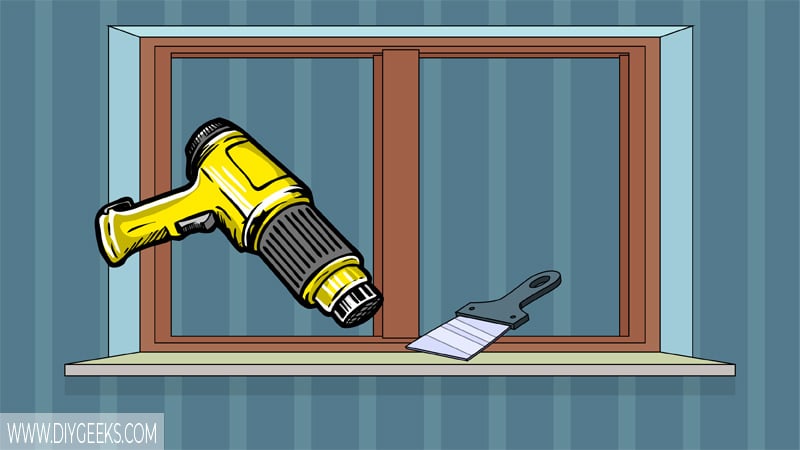
A heat gun is a handheld tool that produces hot air when powered up — it’s often used as a tool to soften or loosen paint finishes. Once the paint finish is softened or loosened, you can scrape it off easier.
The tools you need for this project are listed below.
- A heat gun
- A pair of work gloves
- Lint-free rags
- Dish soap
- A bucket of water
Here is how to use this method:
- Power on the heat gun and use medium temperature.
- Move the heat gun over the paint finish. Don’t keep it on the same spot for too long as it can damage the window sill.
- Once the paint coating bubbles or changes its form, use a paint scraper to remove it.
- Apply warm soapy water over the paint coating and use a scrubbing brush to remove it.
- Repeat the steps until the paint coating is removed.
Note: Don’t keep the heat gun too close to the surface as it can damage it.
5. Use a Sandblaster
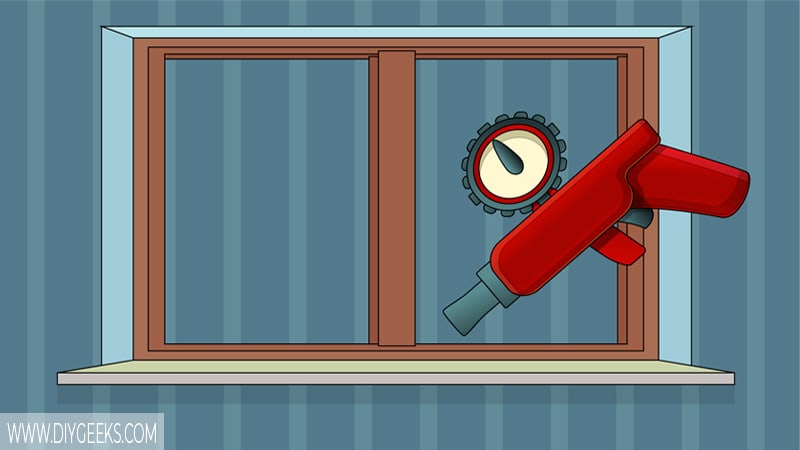
A sandblaster is a tool used to propel abrasive materials (such as sand) at a high speed against surfaces to remove unwanted paint coatings.
The sandblaster downside is that it can scratch the window sill if not careful enough.
The tools you need for this project are listed below.
- A sandblaster or hopper
- An air compressor
- A blast pot
- A piped nozzle
- Mineral sand or soda abrasive
- Safety gears.
Here is how to use this method:
- Add blasting medium (sand) into the hopper. The hopper is located on top of the sandblaster.
- Attach a pipe nozzle or hose to the sandblaster.
- Connect the air compressor to the port on the back. Ensure the compressor hose is locked properly. The compressor provides pressurized air to the sandblaster so it can blast the sand.
- Regulate the air pressure — use 70 PSI for paint removal.
- Use the sandblaster to remove paint from the window sill.
- Don’t keep the sandblaster at the same spot for too long as it can scratch the surface.
- Once the paint is removed, clean the surface with warm soapy water and remove the dust.
6. Use Sandpaper
Wet sanding is an effective method to remove paint without scratching the window sill. Medium-grit sandpaper (100-grit) gradually wears off the paint from the window sill until it’s completely removed.
Start sanding with fine-grit sandpaper (220-grit) if you don’t want to risk scratching.
